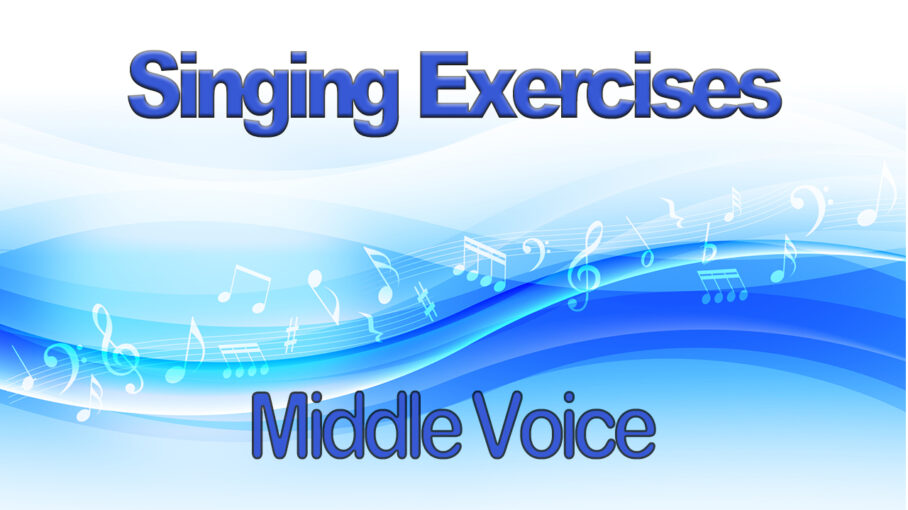Scales and Vocal Exercises
Scales and Vocal Exercises
Singing scales and vocal exercises will improve the strength, flexibility and stamina of your vocal cords. We have included a few exercises here that will help you learn to sing, but they don’t replace advice from your own vocal coach/singing teacher/choir leader if you have one.
You should always gently warm-up your voice before embarking on the more harder scales.
We have listed our singing exercises below starting with our warm up exercise first, followed by our range of vocal exercises.
Our exercises have been set out in keys suitable for High Voice, Middle Voice and Low Voice.
- High Voice is for Soprano and Tenor ranges,
- Middle Voice is for Mezzo or Baritone ranges,
- Low Voice is for Alto’s and Bass ranges.
If you don’t know what voice range you are, try the middle voice first to see if it’s ok for you, or if the range is too high or too low. Also see our guide on how to find your vocal range to help you further. Find Out More About Your Vocal Range
To get the benefits of training your voice, you need to be doing these exercises on a daily basis. Either bookmark this page to keep coming back or subscribe to our Youtube channel.

About vocal exercises
Vowels
When we learn to sing, we use a combination of consonant and vowel sound . These sound combinations along with different scales can have different effects on your voice, it’s tone and resonance.
The main vowels sounds in singing are:
- Ah as in Apple
- Eh as in Air
- Ay as in Sky
- Oh as in Orange
- Ee as in Bee
- Oo as in Room
Consonants
Consonants can be hard or soft sounding. Soft consonant sounds examples are: F, L, M W. Hard consonant sounds examples are G, H, T and Y.
Combining consonant sounds with our vowels sounds can help improve your singing, by moving the position of your mouth, tongue, larynx and soft palate. For example the ‘L‘ consonant, mixed with the Ah sound – giving us La La La La La … is using the tongue muscle as well as your vocal cord muscles. It’s a good consonant / vowel combination to start learning with because the tongue takes some of the weight off the vocal cords (folds).
When you first start training your voice, your vocal cords (folds) will tire easily. Listen to your body (and your voice) and if your voice starts feeling husky or croaky or dry, then rest up and come back to it again tomorrow. You will find the more practice on a daily basis, your voice become stronger and won’t creak and croak as quickly. Take your time. It takes years to train your voice, so please don’t expect results overnight.
Also, Of Note
We have put some consonant/vowel combinations suggestions for you to try on the video. We have mainly used La la la… as it’s effective combination for the beginner. However, as you get more proficient at the scales, or perhaps you have been suggested something to work on by your singing teacher, you can use different consonant/vowel combination instead of what we suggest on the video.
Remember you must practice on a regular basis to get the best from the exercises.
Our exercises have been set out in keys suitable for High Voice, Middle Voice and Low Voice and contain a range of exercise video’s to warm up your voice as well as increase your range and agility. Click on the picture for your vocal work-out.
- High Voice is for Soprano and Tenor ranges,
- Middle Voice is for Mezzo or Baritone ranges,
- Low Voice is for Alto’s and Bass ranges.




